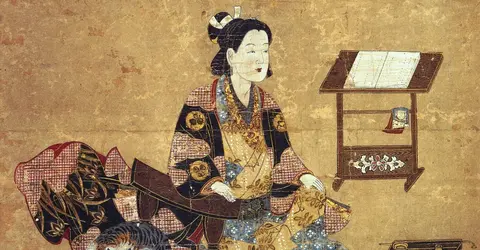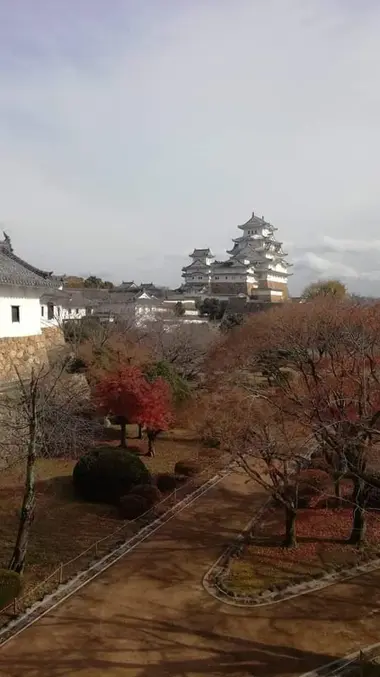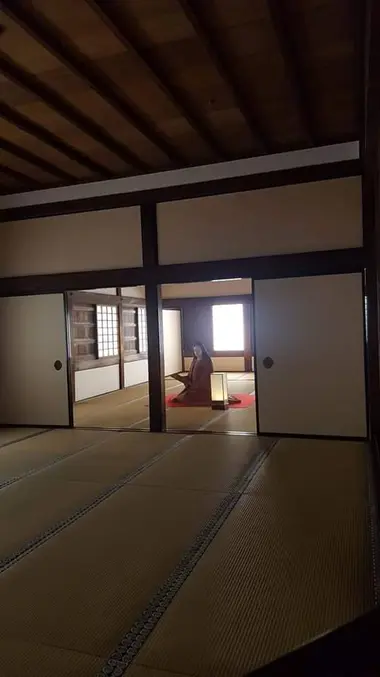Himeji Castle and Princess Sen 姫路城とセン姫
A majestic castle for a legendary princess
Thanks to its imposing structure and its white color which gives it an elegance and an unforgettable identity, Himeji Castle has become one of the most renowned castle to visit in the land. If its feminine energy and its silhouette, which is said to resemble that of a heron taking flight is the legend of Prince Sen...
That of Princess Sen is undoubtedly the most emblematic of all. Indeed, intimately linked to the castle, the life of the princess is still commemorated there today. His story, mixing heroism and tragedy, has become a legend of Japanese folklore that has survived the centuries.
The tumultuous life of Princess Sen
Granddaughter of warlord Tokugawa Ieyasu, founder of the Tokugawa shogunate who ruled Japan from 1603 to 1867, Princess Sen, born in 1597, will have an extraordinary destiny. Her fate seems sealed, when she is married at seven years old to Toyotomi Hideyori, the leader of an enemy clan, to bind the two families. The situation changed when she was 19 when the conflicts for the control of Japan resumed between the two clans and her family, fearing for her safety, besieged the castle of Osaka where she lived and organized her escape. The end of the fighting then sees the triumph of the Tokugawa clan and the death of the princess's husband.

depiction of Princess Sen
Public domain
After these dramatic events, Princess Sen took her destiny into her own hands: she opposes the will of her father who had promised her to the man in charge of her rescue in Osaka. She chose a love match instead and married Tadatoki Honda. It is at this time that her story intertwines with that of Himeji Castle since her second husband is the son of the lord of the domain. Princess Sen spent arguably the happiest but also the saddest times of her life in the castle nicknamed the White Heron Castle. From the happy union between the princess and Tadatoki, two children were born, a girl Katsu and a boy Kochi. There followed several years of happiness witnessed by Himeji Castle.
However, Princess Sen's life soon took a more tragic turn: her son died of illness at the age of three. Only a few years later, her husband, then her mother, also died. The princess then returned to Edo where she became a Buddhist nun and took the name Tenjuin, following the tradition of widows at the time. This is where she spent the rest of her life until she died in 1666.
The soul of the princess still present in Himeji
Part of the castle, built to accommodate the residences of Princess Sen and Tadatoki, is still standing today. You can walk in the footsteps of the princess and stroll through the rooms steeped in history where she lived. The western enclosure of the castle, Nishi no maru, is made up of a set of towers and corridors. This place, surrounded by a cliff at the back and steep walls with loopholes, was extremely well protected. About twenty rooms are connected by a long corridor of about 240 meters, where Princess Sen's servants lived. From this corridor, called Hyakken Roka, you will have a magnificent view of the main keep of the castle as well as the garden created in the western enclosure.
At the end of this long corridor is the Kesho Yagura, or Cosmetic Tower. The Kesho tower was the place where the princess rested and got ready, hence the name Kesho which means make-up. It is also said that this room was a place of meditation where she prayed morning and evening. This open space, covered with tatami mats and very well lit, is representative of Japanese residences. At the time of the princess, one can imagine walls covered with richly colored planks, with patterns of magnificent birds. Today, the walls are white and the furniture has disappeared, but the charm of this century-old tower has endured despite the past centuries.
To follow Princess Sen, the rest of our journey takes us to Kyoto where we find her tomb in the cemetery of the Chion temple. There, at the end of the path of adoration, you can meditate and admire a view of the city below. But beware of the prankster monkeys that inhabit the surrounding mountain forest!
Address, timetable & access
Address
Phone
+81-79-285-1146Timetable
By train: JR lines (Bantan, Kishin, San-yo, Super Hakuto and Tokaido-Sanyo) and Shinkansen Tokaido-SanyoPrice
Ticket for the Castle: Adult (18 years and over) at 1,000 yen ($8:50/8€) and students (elementary, middle, and high school) at 300 yen ($2.50/2€).Combined ticket for Himeji Castle and the garden of Kokoen: Adult (18 and over) at 1,040 yen ($9.25/8.75€) and students (elementary, middle, and high school) at 300 yen ($2.50/2.25€). No admission fee for preschoolers.Access
9 am -5 pm (last entry at 4 pm) *9 am to 6 pm in summer (April 27 to August 31) (last entry at 5 pm)Website
http://www.himejicastle.jp/fr/





















